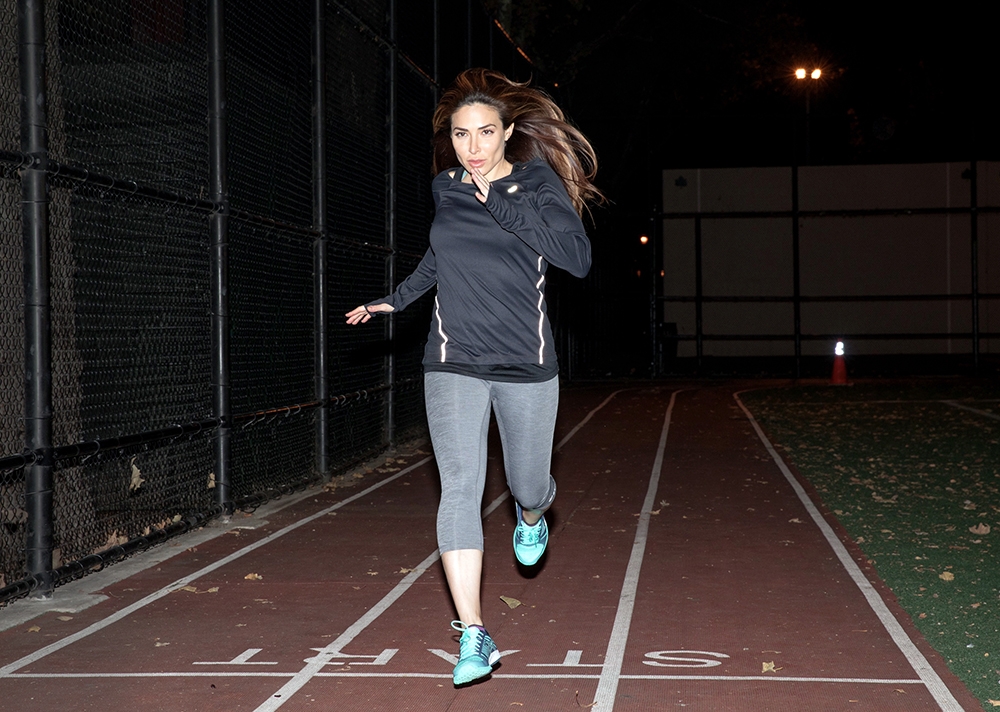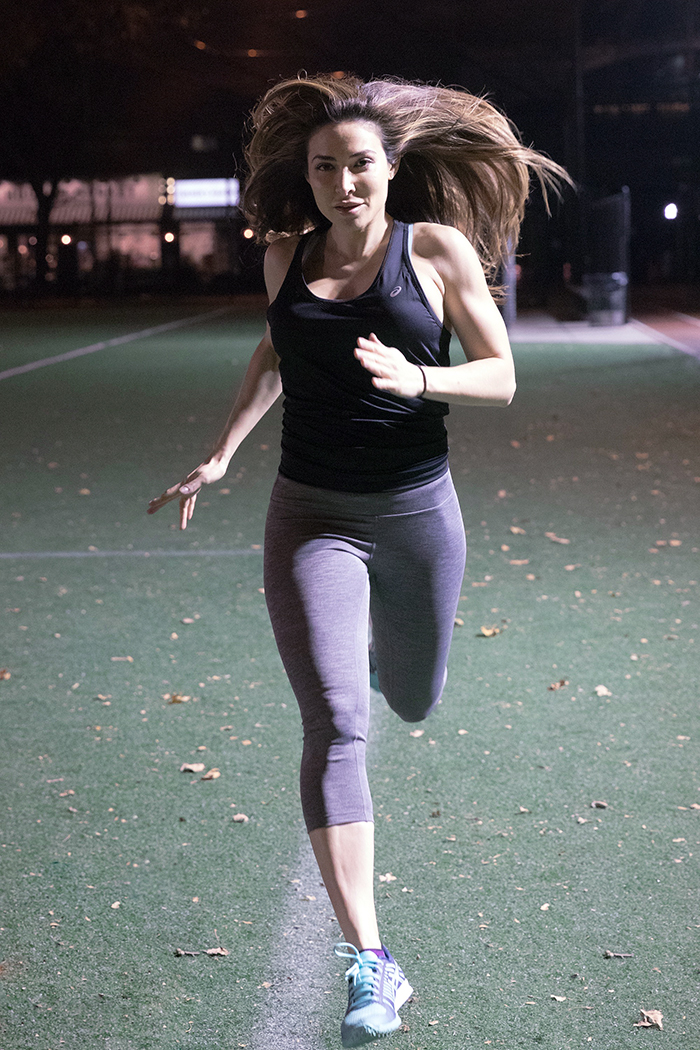
This topic is an important one, especially in light of the deaths of Karina Vetrano and Vanessa Marcotte, which both really affected me as an avid outdoor runner. Karina's death was just too close to home. Her body was found along a Howard Beach path she ran down often. And finally, just a few days ago, her murderer/rapist was caught and charged. Vanessa Marcotte's death, while it didn't happen in New York City proper (her body was found in Massachusetts where she was jogging while visting her mother), was still a major reality check for me because she worked at Google, a mere block away from where I used to live here in NYC. For months, every time I walked past the Google building, all I could think about was her untimely death.
What a tragedy in both cases. These attacks from 2016 prove that we need to be a lot more cautious than ever. If you're a runner, be safe out there, but also keep an eye out for your fellow brother and sister runners too. We need to look out for each other and step up to help when we spot signs or sounds of duress. Please read this amazing guest post by Dan Chabert and leave your comments afterwards. All photography was taken by Travis W Keyes.
-- This is guest blog written by Dan Chabert --
Running is hands-down one of the most versatile and accessible sports there is. We runners can go for a run practically anywhere and practically anytime our hearts desire; we can go for a quick run through gridlocked downtown streets, go for hours on end through some mountain ranges that rival the Sound of Music, or we can even go for a few laps around our community track. The possibilities are truly endless for us. We can even run indoors if we want, courtesy of indoor tracks or treadmills, giving us even more flexibility to practice our craft if we're running at off-peak hours or if we don't want to deal with inclement weather. In the heat of the day or in the pre-dawn cool of the morning, we can run virtually all the time.
Even though we can obviously run whenever and wherever we'd like, it pays to be mindful of our safety. Unfortunately we hear about runners who were hurt, harassed, assaulted, or killed while out doing what they love, and these tragedies often spur conversations about “running safety” and precautions that are worth taking. It doesn't matter if you're running in the middle of the day or in the middle of night; it's imperative that you're mindful of your safety and take precautions to ensure it for yourself. While a lot of the conversations recently have focused on what women runners can do to ensure their own safety, since the runners who were most recently killed on the East Coast, in Brooklyn and in Massachusetts, were women, I'd argue that all of us, men and women alike, would benefit from being cognizant of our safety as we're running. This isn't at all to say that the women who were killed weren't being safe, since unfortunately, if someone is determined to harm you when you're out running, there's virtually nothing you can do; this is just to say that we can all take some preventative precautions and get ourselves into good habits right from the start.
Here are some of my own suggestions, based on many years of running by myself and/or in the dark that we runners can use to try to be safer when we're out there hitting the roads or trails, doing what we love:
Share your planned run with someone you trust. Before you head out for your run, tell a loved one where you're going and when he/she can expect you to arrive home. It can be annoying to have to plan out your route before you leave, but if you don't return home when you said you would, your loved one will have an idea of where you were planning to go. Sometimes we take detours when we run, and sometimes our runs go longer than we plan (due to stoplights, traffic, seeing friends we know, or myriad other reasons), but giving a loved one a ballpark idea of where you're going and when you'll be home can be comforting. If you can, avoid running in a new-to-you area for the first time in the dark; instead, run it first during the daytime, lit hours so you can scope out the area and get a better feel for it. In addition, you might want to consider running in places that are heavily-trafficked with other people (such as other runners or other cyclists) so that you won't ever feel alone. Consider, also, the presence of lights in the areas you'll be running during the dark hours.
.jpg)
Make yourself be seen! It can be incredibly difficult for motorists to see you when you're running in the dark hours, and this is especially true if you're not illuminated. In fact, chances are high that you will be able to see vehicles far sooner than they'll be able to see you. To rectify this potential disaster, purchase (and wear!) a headlamp, reflective vest, and other safety elements (like knuckle lights or reflective running attire) so that other runners, pedestrians, and motorists can see you from afar when you're running in the dark. Blinky lights, while silly-looking, are also important to have and wear because they'll make you even more visible to motorists than you would be if you wear solid, non-blinking lights. You could argue here that making yourself visible to others could be inviting trouble to find you, so consider where you're running. If there's any chance that you'll be running in an area where there are cars present, I'd argue that you shouldn't take any chances of getting hit, so making yourself as visible as possible is key. Bianca is wearing runwear from ASICS in these images. Her shoes, tops and run tights all have reflective features that catch the light around her from the track. However, if she were running somewhere without public lighting, a blinking light as an arm band, hat or belt would be a better, safer choice.
Don't be a ninja runner. If you want to make yourself be as visible as possible when you're running, especially when it's dark outside, then whatever you do, do not dress like a ninja. I see so many runners who wear all-black, from the tops of the their head down to the soles of their feet, when it's dark outside that it infuriates me. Black is no doubt flattering and slimming, but it also makes you nearly invisible to other motorists and runners on the road! Most running-specific attire these days come equipped with some reflective elements, like reflective strips or reflective patches, but do your research when you're buying gear. If you insist on wearing all black when you run, do it during the daytime hours, when people will still be able to see you.
Carry an alarm system and/or pepper spray. I know it probably seems cumbersome to wear one of these on your arm or wrist, but what if it saved your life? For many female runners out there, they are powerless against a surprise attacker. Sadly, fighting back by kicking, hitting and even biting is sometimes not enough (especially in Karina Vetrano's case, although the coroner and police reported that it was evident she put up the fight of her life). A loud, screeching sound or a faceful of pepper spray can often more effectively deter an attacker. Sabre Red Pepper Gel (Maximum Strength) can severely weaken and irritate one's eyesight and Sabre Runner Personal Alarm once activated can be hard to turn off (there's a reason for that). In the grand scheme of things, these gadgets are small, lightweight and totally worth it to carry when you're running alone in areas that don't get much traffic. Just don't pack them in your suitcase while traveling, as they have a tendency to activate when your bag is being handled and can cause quite a stir at the airport!
.jpg)
Carry identification. It's a good idea to bring some ID with you when you're out for a run because if an emergency happens, and you're unable to speak for yourself, medical personnel (or a good Samaritan) will know who you are. A quick search online will bring you many options for runner identification – like bracelets or shoe tags – if you don't want to physically bring your actual driver's license with you. In fact, some runner identification companies will even link your physical ID tag to an online database, where you can update your information with your emergency contact, medical conditions, allergies, and the like so that EMTs can access it if they need to. The prices are usually minimal, and it can give you (and your loved ones) peace of mind.
Rethink using earbuds when you're running. When you're hitting the roads for a run, regardless of the time of day or night, to be as safe as possible, do everything you can to make all of your senses as sharp and available as possible; that is, obstructing any of your senses will make you ever-so-slightly less aware, which can be detrimental for your safety. Runners often enjoy listening to music or podcasts while they run – myself included! – and usually wear earbuds to do so. This can be problematic because it lessens your ability to hear when you're running, which can obviously be unsafe. If you're insistent on listening to music or podcasts when you run, consider keeping the volume very low (so that you can still hear others around you) or even removing one earbud entirely. I personally forgo earbuds entirely when I run by myself in the dark, but that decision is up to you.

Don't forget about the animals. Depending on where you live, you might not need to worry about animals, but if you're running somewhere that will give you many encounters with local wildlife, be sure you know before you go about a) what you'll encounter and b) how they behave at night/in the dark. Some animals might be more aggressive when it's dark outside, so doing some research ahead of time for what you might encounter on the trail could be a wise decision.
Make it more fun with another. Many people enjoy the quiet and solitude that running gives them, yet many also find running with friends to be as equally energizing and even more fun. If you're running in the dark, you might feel safer if you run with a buddy – human or canine – because of “strength in numbers.” If you do go out with others, I'd suggest that all the aforementioned guidelines still apply: make sure everyone is dressed appropriately, tell someone your path and intended return time before you depart, bring identification, and keep the earbuds at home.
Let your loved one track you, and/or bring a phone. Certain companies, such as Strava, RoadID, and Gamin, have runner-tracking features that allow you to be tracked by a loved one when you're out on your run. There are typically costs involved with this feature, but it can bring some peace of mind to your loved one to be able to see on a map where you are at all times on your runs. Additionally, you could also bring your phone with you on your runs so that you could get reach your loved one – and he/she, you – during your run if need be.
Even though we can never fully protect ourselves from danger during our runs, these safety tips are little steps that we can take to make ourselves maybe a little more safe than we would have been before. In no way are my suggestions exhaustive – some people also suggest taking some runner safety martial arts classes or carrying mace with them – but I've found that these have worked for me over the years. Your own personal safety will probably be the most important concern that you have to consider when you're running outdoors, especially when it's dark out, but with some planning and some smart choices, hopefully you'll be able to enjoy your runs without too much concern.

